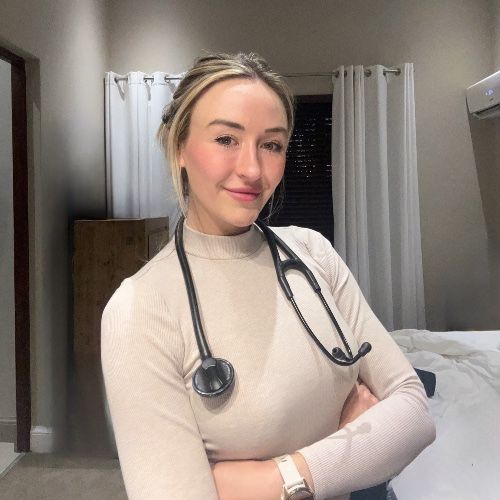Infections in people who inject drugs
Injection drug use is becoming increasingly common in Sub-Saharan Africa...and with it, the myriad of infectious complications. On this episode, Vin chats to Dr Evan Shoul about infections and some important considerations for managing patients who inject drugs.
About our Guest:
Dr Evan Shoul specialised as a consultant physician in Johannesburg and then completed his infectious diseases fellowship on the Wits circuit. He now works at the Netcare Milpark Hospital in Johannesburg and has a special interest in HIV and travel medicine.
Social media:
Twitter/X: @EvanShoul
Southern African HIV Clinicians Society guidelines for harm reduction:
From Southern African Journal of HIV Medicine https://doi.org/10.4102/sajhivmed.v21i1.1161
Visit the Microbe Mail website to sign up for updates
E-mail: mail.microbe@gmail.com
YouTube: Microbe Mail
Instagram: Microbe_Mail
Transcript
Injection drug use is becoming increasingly common in sub Saharan Africa. The prevalence of use ranges from 0 to 3 percent in the general adult population. And in Kenya, Tanzania, Nigeria, Mauritius, and South Africa, the number of persons who inject drugs is growing. Along with the use of injection drugs comes a list of complications, including infectious complications. So the focus of today's episode is microbiology in people who inject drugs.
This is Microbe Mail, and I'm your host, Vindana Chibabai. My guest today is doctor Evan Shaw. Evan, thanks so much for joining me today. Please tell the listeners a little bit about yourself.
Uh, thanks, Vin.
Thanks for having me. Um, I'm Evan Schull. I'm a physician and an infectious diseases physician working in a big central Johannesburg hospital in a very urban, uh, setting where we receive a lot of patients from downtown Johannesburg and also from from other more, uh, more rural areas. So we get to see a great range of conditions across the board.
So a couple of reminders before we head into this episode.
Remember to sign up for updates on our website. You can also follow us on your favorite podcast player of choice. You can follow us in social media as well, and that would be on x, Instagram, or Facebook. All of our team members have LinkedIn pages as well so you can follow us there. Also, remember to give us a 5 star rating on your podcast player of choice.
And last but not least, please make sure to share microbe mail with any of your colleagues, students, or anyone who might benefit from or be interested in this content. Please help us reach other African countries and other low and middle income countries as well. Okay, Evan. Let's start. And I think the first question to get us going on this is, why is injection drug use becoming so important for infectious diseases and microbiology?
And more specifically, if you're in other specialties or even in general practice, why would you need to know about
it?
Well, then I think you you touched on this in your in your intro where you spoke about the, the incidence, the increasing numbers, um, particularly in a place like South Africa, where documenting just the pure numbers of people who use drugs or people who inject drugs, that data is a very gray area and obviously very liable to be grossly underreported. So within the South African context, um, I think the usage is probably a lot higher than we would anticipate. And the overall numbers are almost certainly increasing. Um, I think the other thing within the South African context is that we have a very urban bias towards these sorts of situations, where we feel that it's only really the big cities that experience people who use drugs.
But more and more data is showing that there are increasingly rural pockets of injected drug use. I think the other thing, just regarding why it's really important for us within infectious diseases and microbiology, is that very often something like drug use would form part of a social history which we take when we're seeing patients. And that history is often totally inadequate. It's a very brief history that we take. It doesn't necessarily explore the depths of people's personal and private lives, uh, especially when it comes to things like sexual histories, alcohol, and drug use, are particular blind spots.
Um, maybe within infectious diseases, we love really getting to the nitty gritty of that side of things. But I think for a lot of other disciplines, like you mentioned, or in general practice, there are a lot of time pressures. And so the finer nuances of people's personal lives don't often make it into the sort of main history. And then, of course, particularly in South Africa, where we have such a high prevalence of HIV, you know, people who who inject drugs form such an important component of the key populations that are often neglected within the the HIV epidemic.
Those are really, really important points, especially on the social history.
Are there any specific IV drugs that you think are associated with, um, infectious diseases or anything in particular related to South Africa that might be different from other parts of the world?
Um, not necessarily. I think the only thing really that's particular to South Africa is maybe the terminology and the street names of of certain things. But otherwise, the the core components of, uh, what's used are are similar. Things like nyalpa and wunga are heroin based, and so there isn't anything necessarily from a core ingredient point of view that's particular to South Africa.
Thanks,
Evan. That gives quite a good picture, I think, for our international people who inject drugs at increased risk of infections compared to people who don't? And can you tell us what the possible reasons for this are?
Yes. I think the people who inject drugs are definitely at increased risk of infections Just from a baseline incidence level, they're also at increased risk of developing more severe infections.
And I think there are a lot of reasons for that, more along social lines where people who use drugs are often subjects of an enormous amount of stigma. There's a great reluctance to seek healthcare because of the attitudes that a lot of healthcare workers have towards people who use drugs. And so besides for the capacity from a socioeconomic point of view for people in this situation to access health care. Even when they do access health care, they experience such an enormous degree of antagonism. Um, and so ultimately, either present late or they leave the hospital early.
And so as a result, the risk of the infections is significantly increased. Also, in terms of the risk, obviously, this relates intricately to safe injecting practices. So for those who don't have access to clean injecting equipment, who don't have access to programs that are run specifically aimed at this population, a lot of times the lack of access is a major precipitant for the risk of infections. Very few opioid substitution therapy projects. Um, and so as a result, safe injecting practices are very difficult to access.
And so as a result, these risks are are increased. So there's a lot to unpack when it comes to the risk that people who inject drugs experience. Unpacking infection risk for the population of people who inject drugs, there are a lot of variables to consider, starting from the socioeconomic bracket that a lot of people find themselves in. Um, often this population would fall within a poverty bracket. Um, a lot of times, the access to health care is restricted due to the socioeconomic splits, but also due to the attitudes and the stigma that comes with being someone who uses drugs and accessing healthcare uh, within South Africa, which doesn't have a very, uh, evolved, um, attitude, uh, towards accommodating people who use drugs within the health health care system.
Evan,
can you tell us about some of the syndromes that people who inject drugs commonly present with and perhaps additional syndromes that 1 should be looking out for in people who inject drugs?
Clinical syndromes that we encounter within infectious diseases, and I think this would apply to a lot of people working within general practice or working within an urban setting, the clinical syndromes can mostly be divided into 3 main groups. So number 1 are the skin and soft tissue infections. Number 2 would be the infective endocarditis that we see complicating intravenous drug use. And number 3 would be the viral infections that we see associated with unsafe injecting practices.
And these viral infections obviously will include HIV, hepatitis B, and hepatitis C. So those are the infectious issues. That's not even considering the other multitude of complications that we have to deal with in hospital when these patients are admitted, such as the mental health implications, the substance use implications, um, overdose, withdrawn. So that's the core elements of complications of drug use that we also have to consider when caring for these, uh, these patients in the hospital.
So just a reminder for the listeners that we're really just focusing on infections in this episode, but there is so much more to consider in this patient population.
Now can you talk us through what some of the pathogens are implicated in this disease process that can be directly attributed to the use of syringes?
So when it comes to the skin and soft tissue infections, um, it would cover the whole spectrum of, um, of these infections from something as seemingly benign as as cellulitis and progressing to subcutaneous abscesses and necrotizing dasciitis. And very often, these infections are polymicrobial, which is maybe a little different to the usual times that we experience these clinical syndromes in our practice. So for the most part, if someone's coming in from the community with a skin or soft tissue infection, we can be pretty sure that we're either dealing with a strep or a staph infection. However, when it's related to someone who's using drugs, that microbiological spectrum broadens quite significantly to, besides for the gram positive cocci that we have to consider in our differential, we've obviously also got to consider gram negative of the sali, particularly Pseudomonas, and anaerobic infections within our differentials of skin and soft tissue infections.
Something like infective endocarditis is certainly increasing in incidence. The microbiology is different. The clinical presentation, the cardiology of it uh, is also very different to the infective endocarditis that we experience in people who present from the general population. Obviously, as most people would know, when it comes to the valve involvement of infective endocarditis, it would mostly be right sided valve lesions, particularly involving the tricuspid valve. And these infections can sometimes complicate with, um, septic emboli, uh, and abscesses going to the lung.
Okay, Evan.
I'm going to be a typical microbiologist here. Um, and you did a pretty good job giving us a bunch of bug names there, but are there any additional organisms that are commonly associated with people who inject drugs either due to associated risky behavior or for other reasons?
The the microbiology, um, of it is is quite similar to that which we mentioned related to skin and soft tissue infections, where still the most common would be gram positive cocci, particularly staph infections. We have to always consider MRSA as an important cause in these patients.
But then also, what's interesting when it comes to considering the differential of involved organisms with infected endocarditis, we have to consider gram negatives, but also fungal causes for endocarditis in people who inject drugs. And then the third group being, um, the viral infections are probably some of the more common ones that we would have to deal with. And I think a lot of people working within general practice or working within the community experience would be the HIV, hepatitis B, and hepatitis D infections relating to injecting drugs.
Fantastic. I think that gives us a really good background from a clinical and a microbiological perspective.
So I think let's try and dive in and talk now about how we would investigate a patient who injects drugs in whom you've suspected some infections.
So I think regardless of the of the presentation, It is a really important responsibility we have to explore a number of the different risks that they'd be associated with. So, for example, screening for viral hepatitis, hepatitis A, b, and c, screening serologies, um, obviously, an HIV test for those who either haven't had 1 or aren't already diagnosed. And, um, depending on the on the clinical presentation, um, you know, obviously, if they're coming in with a cellulitis or an infected endocarditis, we would investigate them according to the usual protocols related to those particular infections. So things like blood cultures, even though blood cultures, foreskin and soft tissue infections don't have a very high, um, hit rate.
Certain point vector of endocarditis. We would investigate them as we would any other suspected endocarditis patient. Sometimes just relating to skin and soft tissue infections, um, 1 important 1 or 2 important points related to it is that even though the antecubital fossa is by far the most common site for injecting, sometimes these patients can present with unusual sites with sebilitis. So, um, obviously, they would try and inject wherever a vein is possible. So very often, groin, feet.
So these are sites that for example, if someone comes in with a fever of unknown origin, um, we've got to take off our blinkers and maybe be a bit more, uh, exhaustive with our examination. Particularly looking for, um, so number 1, unusual sites. And then number 2, sometimes the infections are deeper within the soft tissue, and they actually need an ultrasound to delineate whether there's an abscess or a collection, um, under the skin. And, you know, very often, um, when people who inject drugs come into hospital, there are a multitude of different injecting sites that have been used. Sure, there might be some that they focus on repeatedly, but, um, very often, um, it's not just 1 site.
And it's always worthwhile remembering that there are likely to be a number of different sites that are implicated, particularly when it comes to things like cellulitis or abscesses. And it's very hard, sometimes quite quite hard to determine which is the offending area that that is leading to their presentation. Um, just while I'm talking about the skin and soft tissue infection side of things, it's also an important thing to remember that very often injecting practices predispose to thromboses. So a lot of times, uh, these patients will have besides for the cellulitis or an abscess, often there'll be thrombophlebitis and deep vein thrombosis that could also present as a fever of unknown origin or may become secondarily infected. And that's, you know, thrombosis or vascular infections are very nebulous entities, very difficult to diagnose, and also very difficult to tease out in the grander context of someone who's using a lot of different veins to inject.
So I think the main thing is really to not be laser focused on 1 particular area, on 1 particular site, but really just to see this person's presentation as an opportunity to, uh, to look into a whole host of of other things that they are at risk of developing.
Great. That was really, really comprehensive, Evan. Now this basically moves us on to management. But I think to start that conversation, we should probably start by highlighting the challenges in treating infections and managing just general hospitalizations in people who inject drugs.
The management, um, of these particular infectious issues really cannot be dealt with without considering the other elements of the patient's care. So very often, um, there are very complex social and psychological dynamics that we have to contend with, um, almost to a point where treating the infection is the easy part And dealing with the psychological and the social components are, I think, far more trickier. And I think a lot of us who work with these patients in an in hospital setting realize that If the drug use component or the psychological component is not adequately addressed, then treating the infection is likely to be a non starter. So just imagine the prospects of having someone with endocarditis who is normally used to being completely autonomous out in the community, maybe using drugs a few times a day, and is now incarcerated in a hospital, shackled to a bed with monitors and drips and catheters and pipes. Uh, and now we are telling them that they can't leave, they can't do this, they can't do that, they can't go outside for a cigarette, they have to stay in the ICU, they have to be monitored.
Very often there are major sort of power dynamics that we have to negotiate in these situations. And unfortunately, this group is commonly associated with the leading hospital, what the Americans call AMA against medical advice and what we call RHT, refusing hospital treatment. And unfortunately, the healthcare establishment is incredibly biased towards people who choose to leave the hospital. And often we don't do a great job of exploring why they want to leave. And we don't factor that into our overall management plan.
So dealing with the infection is 1 component. Dealing with the drug use is another component that is notoriously poorly done, particularly in our setting where not many people are familiar with managing something like opioid substitution therapy. A lot of the psychiatric care is particularly regimental and punitive, it has to be a big part of the care that these patients receive. So it's a combination of treating the infection, treating or not really treating but more managing or trying to control the substance use as best as possible, then considering the social and psychological elements that come with us. And the traditional hospital environment is a very, very hostile environment for people who use drugs.
And very often, that is a core component of the care that we that we have to, um, deliver. 1 is just a few other elements related to this population is the so things like venous access. So taking bloods is always quite tricky. There's a great reluctance for people who use drugs to have their veins used for drawing bloods. There's a reluctance from the medical staff side of things to put in central lines or long lines.
Um, a lot of us have terrible biases towards people who use drugs thinking that once we've got a central line in, um, that they're more likely to leave the hospital and use their central line for drug use. And, you know, I think a lot of our decisions are really prejudice these patients. And as a result, they may often be undertreated, you know, because we don't wanna use certain types of venous access. 1 thing that I must just mention, Wim, that is starting to hit the literature, which is maybe 1 small silver lining in terms of managing infections in people who use drugs is that before we would obsess over intravenous management for things like septic arthritis or infective endocarditis, where intravenous management was the bottom line. Thankfully, that dogma is being challenged.
And so there is a big move towards not just within people who use drugs, but just relating to these infections in the general population where incarcerating people in hospital for 6 weeks to get intravenous medication is not within anyone's best interest. And so the move to oral therapy for a lot of these infections is something that's thankfully gaining a lot more traction. Uh, and I think I think when it comes to dealing with people who use drugs, switching to oral therapy is actually a win win for everybody. And something which, you know, over the last few years, there's been a move in the literature to focus on oral step down and within certain clinical syndromes, mostly related to the traditionally long term antibiotic durations. So bone and joints and infective endocarditis.
And I think moving to oral therapy, especially in people who use drugs, will be a major development and a and a major step forward in their overall clinical care.
Great. Thanks. Thanks for covering all of those aspects. Can you comment on whether infections in people who inject drugs are associated with a higher morbidity or higher mortality?
Yeah. I think, um, for for a lot of the reasons that we mentioned earlier, the morbidity and mortality is certainly increased in people who use drugs. So, you know, we mentioned a bit earlier about the difficulty that people who use drugs have accessing health care and the delayed presentations because of their reluctance to present to a clinic or a hospital, because of the prejudices that a lot of healthcare workers have, um, and the stigma that's associated with drug use. So another component of the mobility, sometimes the mortality as well as related to the lack of safe injecting equipment that's available to a lot of people who use drugs. And I think it's such a basic principle in terms of mitigating the risks and preventing the development of infections in the first place.
So, you know, there's a misconception that it's the use of the injecting equipment that's responsible for the infections, but it's really the use of unsafe injecting equipment that lies at the root of the risks that people who inject drugs experience. So I think a lot of times, sort of tied into the poor social histories that we unfortunately take, the intravenous drug use is not necessarily something that comes up early on. And so as a result, there may be delayed, besides for delayed presentation, delayed diagnosis from our side, from the side of the clinician, if we don't consider some of the the subtleties of, um, abscesses or thrombosis or infective endocarditis as a cause of someone's fever. So with the delayed presentation and the delay in making the diagnosis, unfortunately, that's often associated with higher morbidity and mortality. So that's just looking at either the bacterial or potentially fungal elements.
That's not even looking into the HIV and the hepatitis B or hepatitis C that has to be considered as well. And very often the problem list that these patients present with is long and it involves coming up with a batting order of management. And so sometimes the mobility and mortality associated with the care of these patients may not necessarily be related to the issue that they came in with. It might be related to something like HIV or hepatitis C, which didn't make the top 3 problem list when they were admitted into ICU with the infective endocarditis. Often these things fall down the list if they're considered more chronic and more indolent.
And so I think there's the morbidity and mortality that's associated with the acute admission. And then we must never lose sight of the morbidity and mortality that's associated with the longer term chronic issues that sometimes fall off the radar.
Now you've already touched on some of the preventive interventions. Can you elaborate a little further on other preventive interventions we should be considering?
There are a number of evidence based preventative interventions that in an ideal scenario would employ across the board.
Unfortunately, in a big part of South Africa, these services, these interventions are not necessarily government sanctioned. They are often driven by NGOs or NPOs who deal specifically with populations like people who inject drugs. So these would be programs involving needle and syringe services or needle exchange programs. Um, something that is unfortunately still quite underdeveloped within the South African healthcare system and certainly forms almost no component of our training is something like opioid substitution therapy, which is a big void in a lot of our experience and a lot of the care that we provide to this population. And then, you know, we mentioned a number of potentially preventable interventions in the form of vaccines.
So we mentioned the Tdap, you know, the tetanus vaccination, uh, I think it's worthwhile mentioning something like hepatitis b vaccine as well that should be offered to people who inject drugs as a preventative intervention.
So even our micro male audience is varied and consists of clinicians and students that treat a variety of different patients. So we always try and address age and gender issues on all of our episodes. Is there anything specific we need to know about that relates to age or gender on this particular topic?
I think maybe not necessarily related to age, but I think within gender, um, women who inject drugs have a far more complex dynamic related to accessing healthcare, related to gender based violence, complicating the experience of coming to a hospital or being assisted at all.
So that's something which has to be dealt with as well, on top of all the other complexities. With regards to age, there isn't anything specific that I'm aware of that influences or significantly modifies the the presentation or the care.
Right. That's really important to know. Thank you for that.
Okay, Evan. This really brings us pretty much to the end of this episode. So can you give our listeners a quick take home message?
Yeah. I think, um, the take home message for those who are looking at this with infectious diseases goggles is to maybe take off the infectious diseases goggles and try and look at it with a far greater sense of perspective.
Because very often, if we only focus on the infectious diseases component, we're going to lose sight of a number of critical components of the care of these patients. And, you know, if we don't address a lot of the core issues relating to people who use drugs, then treating the infectious diseases complications is likely to be potentially compromised. So for example, starting someone on antiretroviral therapy. If we don't consider their circumstances when they're at the hospital, particularly related to follow-up or adherence issues, you know, very, very often, that's the result of other factors that maybe we we didn't consider in the initial consultation. Um, other take home messages to consider are to remember a broader differential from a microbiological sense where even though the clinical syndromes may mirror a similar picture to that which someone in the general population may present with, the microbiology is general population plus a bit extra.
So the standard organisms that we are familiar with, um, but then particularly relating to things like skin and soft tissue infections and infective endocarditis, we've got to add things like gram negatives, particularly Pseudomonas. And in the case of infective endocarditis, to always consider fungal causes as well for those, um, for those clinical presentations. And then I think the the 1 important component of this, which is probably my biggest take home message, is to use the opportunity to not only focus on the clinical presentation of the syndrome that the person has presented with, but use it as an opportunity to explore a number of other risks that the person may have. So even if they come in with endocarditis, it's an opportunity to look into a viral hepatitis screen and HIV test and a STI screen. So these are opportunities for us to really get a broader assessment of the person when they when they're with us, usually for the short period of time that that they are.
Then I must just also, as 1 of my final take home messages, thank a colleague and friend, Doctor. Andrew Scheiber, who is a technical advisor at TB HIV Care and he's also a researcher at the Department of Family Medicine at the University of Pretoria. He has been a critical component of a lot of the research involving people who use drugs within South Africa. And he was also a critical part of an amazing guideline that has been published through the Southern African Journal of HIV Medicine, which is the Southern African HIV Clinician Society guidelines for harm reduction. It's an unbelievably detailed and comprehensive document.
It's from 20 20. A lot of the information is still amazingly relevant. It goes into incredible detail regarding the care of these patients. So if there are any listeners who would care to look into some of the topics we've discussed on a deeper level, then reading these guidelines is absolutely essential. Essential reading.
And 1 thing that I must just mention, we haven't really discussed it much, that the guidelines deal with, is the language and the terminology surrounding this population and this area of medicine where a lot of us within the healthcare sector are guilty of falling into a lot of old stereotypes, a lot of misconceptions, a lot of myths, a lot of very poor, biased and prejudiced terminology, which if we are going to be dealing with this population, then there are a number of really fundamental language issues that have to form part of the care that we provide to these patients. And that's that is covered in the in the guidelines as well. Thank you for that
excellent summary. I thoroughly enjoyed listening to your insights on this topic, and I'm very certain it's going to be a great learning source to our audience. We'll make sure to add the guidelines and the references you've talked about to our show notes so all of our listeners can can have access to those as well.
And Evan, I really hope we can see you again on MicroMail sometime in the future.
Thanks, Ben. Thank you so much for having me. It was a lot of fun. Also, a lot of learning experiences for me behind the scenes as well, just so you know.
Um, and thanks for the opportunity. This is this is a topic not often discussed in the low and middle income settings. So if you have any feedback or even if you'd like to share some of your personal experiences in in management or while you've been learning as well, we'd really love for you to get in touch with us. Remember, you can do so by email or on social media. So until next time, that's it for me, Vin, your micro messenger, and the rest of the microbe mail team.
We'll see you again soon with more contagious mail.











